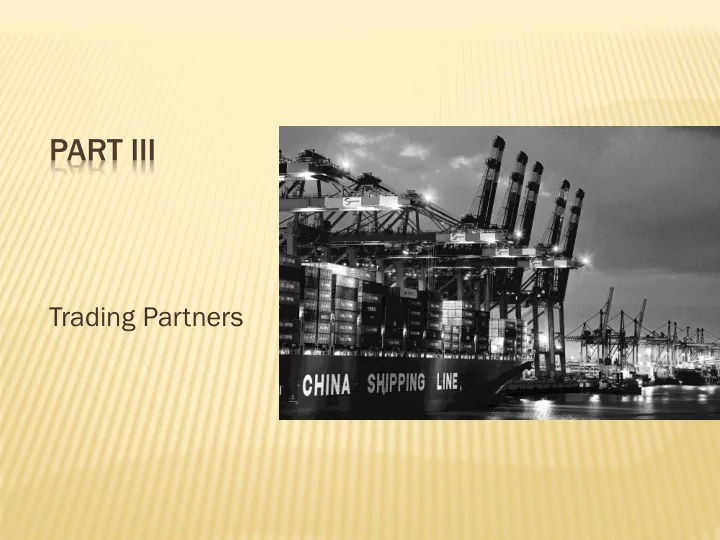

PART III Trading Partners
CHAPTER 11-2. ASIA AND OCEANIA FDM 471 Youngjin Bahng
OBJECTIVES Comprehend the magnitude of Asia as a political and economic trading bloc Appreciate the economic and political positions of individual countries within Asia Examine the status of the textile and apparel business in selected Asian and Oceania countries Project textile and apparel trading trends for Asian countries into the period following the phase-out of the quota system 3
PARTICIPATION OF ASIAN COUNTRIES IN TEXTILES AND APPAREL WTO’s elimination of quotas fostered changes in the patterns of production, trade, and consumption of textile and apparel products for Asian nations In 2010, sustainability of supply chains was most frequently mentioned priority Total labor costs per hour in Asia range from $30.81 in Japan to $0.31 in Bangladesh 4
EAST ASIA East Asian nations are diverse in their political and economic structure China is the largest producer of textile and apparel products in the world 6
CHINA China began moving into a “socialist - capitalist” economy in 1978 China is not only a big producer, but also a big developing domestic consumer market More than 11 million Chinese were employed in textile and apparel factories at the beginning of the 21st century, many of them in the Pearl River Delta region between Guangzhou and Shenzhen 7
TEXTILE MANUFACTURING IN CHINA In 2008, China was the world’s third -largest importer of textiles Considering the dominance of China’s apparel exports provides further evidence of the magnitude of this country’s textile business Largest producer of man-made fibers, competitive in supplying fibers, yarns, fabrics, and trim 8
9
RETAILING IN CHINA Significant increase in retail offerings, facilitated by new government regulations Restrictions lifted in December 2004 on foreign-invested companies allowing China to enter and expand into the market Increased visibility of Chinese apparel designers (e.g., Jason Wu) 10
TEXTILE- Ja Japan, So Sout uth Kore rea, and PRODUCING Tai aiwan an have developed their COUNTRIES IN economies to the point that EAST ASIA • Low-cost apparel production no longer feasible • Have turned to outsourcing apparel production • Focus on developing technical textiles These countries have no domestic supply of natural fibers; some firms have focused on development of synthetic materials 11
APPAREL-PRODUCING COUNTRIES IN EAST ASIA Hong ng Kong ng and Mac acau au are both tiny nations located along China’s shore Free market economies that are heavily dependent on international trade Both nations developed under European occupation, and both nations became a special administrative region (SAR) of China during the last 15 years 12
SINGAPORE Singapore is a small island nation located at the end of the Malay Peninsula One of the wealthier nations in Asia In May 2003, Singapore and the United States entered into an ambitious free trade agreement 13
VIETNAM Vietnam established garment industry during 1990s Producers have significantly upgraded production capabilities, becoming attractive source of exports to the EU and the U.S. Vietnam ranked seventh globally in apparel exports in 2008 14
INDIA Population reached one billion in 2000 (1.24 Billion in 2014) One strength in global trade is competency in the English language In 2010, was world’s top organic cotton producer, ranked in top three in overall cotton production 15
AUSTRALIA Developed nation with the third- highest per capita GDP in Asia, after Singapore and Hong Kong Australia remains the world’s top producer and exporter of wool fiber and fabric 16
Recommend
More recommend